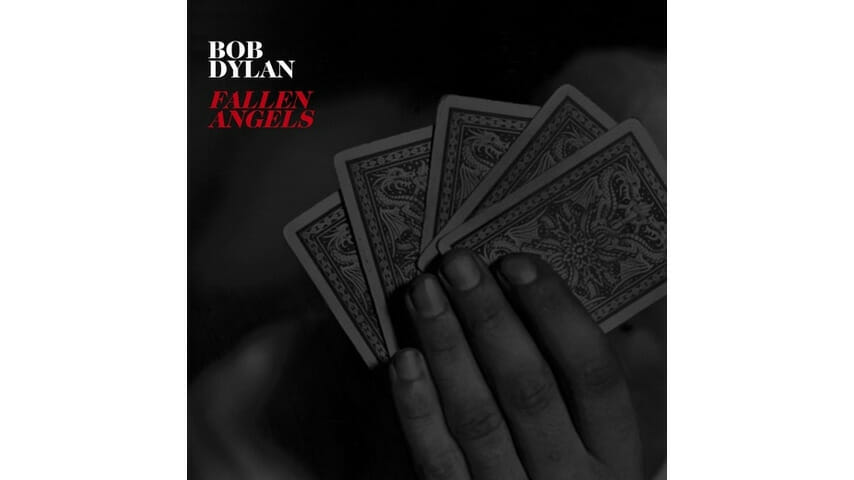Bob Dylan: Fallen Angels

If you look at it from a certain perspective, it’s tempting to consider Bob Dylan’s career as little more than a series of caprices, impulses and perverse shifts in direction, designed as much to baffle and infuriate his listeners as entertain them. But that would be a mistake and a terrible misreading of what’s driven Mr. Dylan for the past 50 years or so.
Certainly, Bob Dylan has taken risks that may have seemed ill-advised at the time, but right from the very beginning, his ‘Judas’-like betrayals have been made in the name of expanding what’s possible and extending vocabulary, both lyrical and musical, and not as a way of attracting attention. When he first “went electric” in 1965, lots of people hated it, stamped their feet and wanted him to strap on his Woody Guthrie working man’s guitar and unplug again. But we all know that time does funny things, and when “Like A Rolling Stone” was voted the No. 1 rock song of all time by Rolling Stone, no one complained about the funky organ or the jangling guitars.
It’s been a familiar pattern in Dylan’s work. His first work to be released after being sidelined by a motorcycle accident in the summer of 1966 was the bucolic, stripped-down John Wesley Harding. When it came out in 1967, psychedelic music was in full swing and Dylan’s album of folk rambles and simple parables vied for space on record store racks with Jimi Hendrix’s Axis: Bold As Love and Cream’s Wheels Of Fire. By the time the rest of the world had caught up with him musically, Dylan had already moved a long way on down the road.
Perhaps it’s because Dylan came so strongly onto the scene as a very young man that he was typecast so early and so easily. It’s something Dylan has clearly struggled with, but even when he has purposely recorded music designed to confuse his audience—as he claimed to do with Self-Portrait, his first album of cover songs from 1970—the passage of time has often been all that was needed to change people’s perspectives. The release of the archival set Another Self-Portrait from a few years ago, in which many of the recordings were stripped of their string arrangements gave the music a whole new context and a subsequent reappraisal of a long-dismissed album that surprised many people.
It’s a familiar theme that has been repeated over and over again. Dylan’s Christian albums that were castigated for so long have also received a lot of sympathetic reassessments in recent years. Listened to with fresh ears, Slow Train Coming is certainly one of the most intense, beautifully written and performed gospel records ever recorded. Take a listen through it if you haven’t heard it recently; it is jaw-dropping in its power and perfection.
-

-

-

-

-

-

-

-

-

-

-

-

-

-

-

-

-

-

-

-

-

-

-

-

-

-

-

-

-

-

-

-

-

-

-

-

-

-

-

-








































